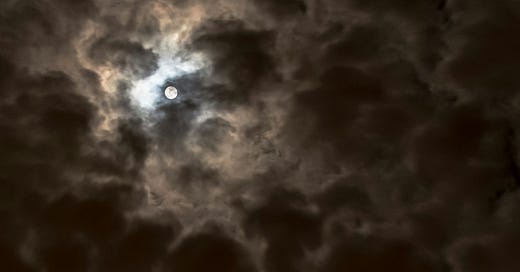Inspired by the 1981 Bioregional Quiz developed
by Leonard Charles, Jim Dodge, Lynn Milliman and Victoria Stockley
1. From where you read this quiz, which way is north?
2. What primary geological event or process influenced the land where you live?
3. In 1800, what creatures roamed the land you live on now? What people inhabited it? What languages did they speak?
4. What time did the sun rise this morning? This evening, what time will it set?
5. How many days are there between full moons? When is the next new moon?
6. How long is a typical, healthy menstrual cycle? Name three bodily signs that a woman of childbearing age (who does not take the Pill or other hormone-emitting pharmaceuticals) can observe to determine when she is fertile and when she is infertile.
7. What is the Winter Solstice, and when is it? When is the Summer Solstice?
8. Including Hawaii, Alaska, Puerto Rico and the lower 48, the U.S. has six main and 2267 smaller watersheds. Where are your main and small watersheds?
9. How much rain fell in your bioregion last year? (A bioregion is defined by a specific place’s landforms, watersheds, soils, native plants, animals and other unique natural characteristics.)
10. Where does your bioregion’s water go? To households, golf courses, soccer fields, data storage centers? To what industries?
11. How much water does your household use in a month? What percentage of your water goes to landscaping, vegetable gardening, toilet flushing, dishwashing, bathing, laundry, cooking and drinking?
12. Map your water from precipitation to your tap and back to precipitation.
13. Name three grasses that grow in your region. Which are native?
14. Name three resident and three migratory birds in your area.
15. From what direction do winter storms generally come to your region?
16. How long is your bioregion’s growing season?
17. What fruits, nuts and vegetables are native to your region? Name three people who know how to preserve some kind of food until the next harvest.
18. Soil’s ability to absorb and hold water for healthy water cycling helps to keep a region cool and soil structure healthy. Which of the following disrupts soil’s ability to absorb and hold water? Paved roads. Parking lots. Shopping malls. Data storage centers. Solar PV facilities. All of the above.
19. Name five minerals within your watershed. What mines are active? What industries mine these ores? What mines have been abandoned? How do the tailings affect wildlife and public health?
20. How much garbage does your town generate, annually, and where does it go?
21. Give directions for composting non-dairy and non-meat kitchen scraps.
22. Name three ways to keep cool in summer without air conditioning.
23. Name three people who know how to make salves and tinctures from your region’s native herbs to heal wounds, flus and infections.
If you can answer
only 0-5 questions: get off your screen.
6-11: team up with an under-ten-year-old, and see how many questions the two of you can figure out within a month.
12-16: get help from an over-seventy-year-old.
17-22: please add questions to this list!
23: treat yourself to freshly gathered purslane or dandelion greens—and post your recipes in the comment section.
Other News
President-elect Donald Trump says that environmental concerns over A.I.’s development would “hold us back.” He plans to ramp up all kinds of energy, make the U.S. the crypto capital of the world and “strip back regulation of the crypto industry.”
Meanwhile, Vaclav Smil explains that the modern world can’t exist without cement (4.5 billion tons, annually), steel (1.8 billion tons), plastics (400 million tons) and ammonia (180 million tons to synthesize nitrogen fertilizers). Allistair Alexander names that we simply won’t have the energy available in the future to do a huge amount of the things we do now. He proposes that we radically cut down and even stop many of our core industrial processes—many of which seem essential to modern life.
New research shows that leaving a rainforest be boosts biodiversity, improves water quality and availability, and sucks up gigatons of carbon. “A rainforest can spring up in one to three years,” said conservation scientist Matthew Fagan. “In five years, you can have a completely closed canopy that’s 20 feet high.” Such regrowth requires humans to stop using the land for intensive agriculture or ranching (cattle weigh compacts soil and makes it hard for new plants to take root). The Bonn Challenge aims to restore 1.3 million square miles of degraded and deforested land by 2030. More than 70 governments and organizations from 60 countries have signed on.
In Los Angeles, gardening wizard Jamiah Hargins has created a nonprofit, Crop Swap LA, which turns lawns into edible landscaping. While providing kale, cabbage, arugula, eggplants and collard greens for hundreds of families, the small farms use a tiny fraction of the water that a lawn requires.





What a great quiz!
https://fairytalesfromecotopia.substack.com/p/ecozoic-strategies-for-bioregional